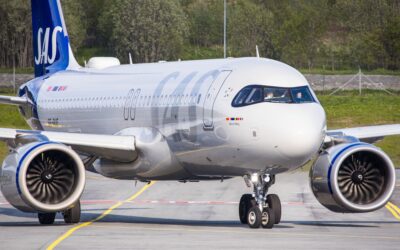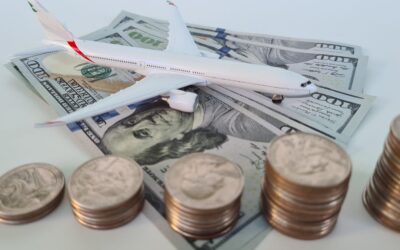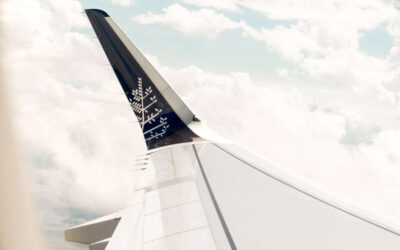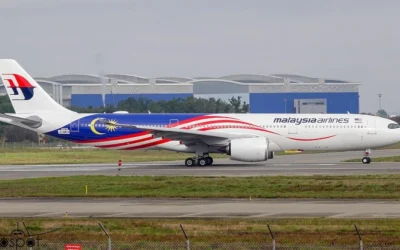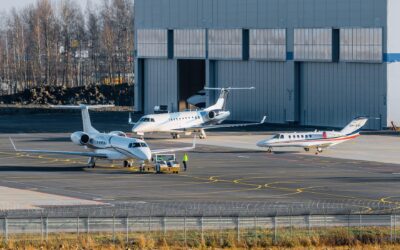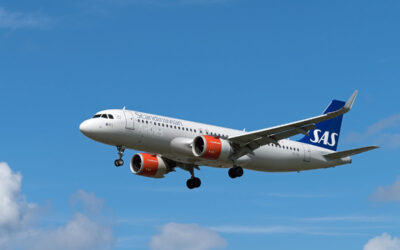Inclusion of aircraft models
Private aircraft are defined as aircraft models primarily intended for transporting individuals. To identify the range of private aircraft models, marketing materials were manually analyzed. In total, 72 aircraft models were identified, based on the definition of being marketed as ‘business jets’ by manufacturers or brokers.
ADS-B data
For air traffic control and monitoring, aircrafts are required to switch on the Automatic Dependent Surveillance–Broadcast (ADS-B) transponder during flight42,43. ADS-B enhances airspace safety by offering a precise tracking of aircraft in real time. There are only very few exceptions to this rule, such as military operations. The ADS-B data was retrieved from ADS-B Exchange (https://www.adsbexchange.com), a platform that offers comprehensive and unfiltered traffic data for every aircraft on a 60 s basis. For each aircraft, the dataset contains timestamp, latitude, longitude, barometric altitude, and an indicator of whether the aircraft is grounded. For this project, the entire database for private aircraft was retrieved for the period 2019 and 2023, totaling 1.8 TB of data related to a total of 18,655,789 legs (individual flights).
ADS-B Exchange is a flight-tracking website and supplier of ADS-B data. Earlier studies have pointed to FlightRadar24 as the provider of the most comprehensive data, in comparison to OAG (Official Airline Guide) and OpenSky2, but ADS-B Exchange is the only supplier that does not filter signals under the USA’s Federal Aviation Administration’s44 Limiting Aircraft Data Displayed (LADD). To understand the scale of LADD, we examined a sample of 10% of all private flights in 2023, finding that 30% had requested LADD. ADS-B Exchange thus appears to be a more reliable provider for private aviation data than FlightRadar24. As data are continuously updated, marginal changes can occur.
There are limitations even to the use of ADS-B Exchange data. Flights are not tracked when they are using a third-party flight ID. Under the Federal Aviation Administration’s ADS-B Privacy program, aircraft registered in the US and flying in US-managed flight information regions can apply for Privacy ICAO Addresses (PIA). These are temporary ICAO aircraft addresses not assigned to the owner in the Civil Aircraft Registry (CAR)45. Legs under these ICAO numbers are not considered in the analysis, because the ADS-B exchange database relies on the original ICAO aircraft address to link it to the model that we use to determine if it is a private aircraft. According to information provided by the FAA (personal communication, 19 April 2024), 283 PIA are currently issued, indicating that around 1% of aircraft may not be covered by ADS-B Exchange temporarily. It is possible that these are used primarily by owners of larger aircraft and lead to a larger underestimate in fuel consumption. We generally find earlier ADS-B Exchange data to be noisier, potentially because of changes to the open-source software distributed by volunteers of the ADS-B Exchange network. In more recent years, PIAs affect the data, as the FAA (Personal Communication, April 19, 2024) outlines that the number of PIA applications has risen considerably since 2020.
ADS-B Exchange data is used to calculate fuel use and emissions based on flight time, as well as great circle distances based on the identification of departure/arrival airports for each leg. To assess the difference between great circle and real distance, we calculate real distances based on georeferenced flight tracks (60 s intervals). Flown distances are on average 10.1% larger than great circle distances.
Aircraft fuel use
ADS-B Exchange provides data of all aircraft with a ICAO 24-bit code, the tail number and model. A manual inspection and comparison of n = 23 aircraft with FAA, FlightAware, and FlightRadar24 was performed to assess the quality of ADS-B Exchange, but no differences were found. The country of registration was obtained from the ICAO 24-bit code based on (ICAO working paper NACC/DCA/3 – WP/05). This dataset is available at https://private-jets.fra1.digitaloceanspaces.com/private_jets/all.csv.
Based on ADS-B Exchange data and unique hex codes, it was determined that there were 25,993 aircraft in December 2023. This compares to industry figures pointing to 23,369 business jets in 202346, 2.1% more than our number that includes 22,878 business jets, as well as 3115 turboprops. The difference can potentially be explained with the use of PIA or aircraft that are offered for sale and not in use. Table 1 shows the number of private aircraft by model, including fuel consumption in gph, as provided by aircraft brokers for these models. The 10 most popular models represent about 40% of the total fleet. The most common is the Pilatus PC-12 with an 8% market share, followed by the Bombardier CL-600 Challenger and the Piper PA-46-500TP.
For the analysis of private aircraft traffic between 2019 and 2023, all data was retrieved and stored to minimize operational impact to ADS-B exchange. The data includes the ICAO code, aircraft, timestamp, coordinates, altitude of the aircraft, and an indicator variable whether the plane is grounded at around 60 s intervals. By tracking the position of each aircraft over time, flight legs, distances, and flight times can be calculated. To calculate fuel use, we use averaged fuel economy values provided for the 72 models, in gallons per hour (gph), as retrieved from marketing materials (see https://private-jets.fra1.digitaloceanspaces.com/model/db/data.csv).
Fuel consumption is calculated for aircraft in flight, i.e., this excludes time spent taxiing or other on-the-ground emissions, and results thus need to be considered lower boundary values for fuel use. Whether an aircraft is in flight is determined based on transponder data that signals a touch-down/takeoff. Emissions of CO2 were computed based on leg duration for each flight:
$${\rm{leg}} \, {\rm{emission}} \, {\rm{kg}} \, {{\rm{CO}}}_{2}={\rm{consumption}} \, {\rm{gallonh}}* {\rm{liters}} \, {\rm{per}} \, {\rm{gallonLgallon}} \\ * {\rm{kg}} \, {\rm{per}} \, {\rm{liter}} \ {\rm{of}} \, {\rm{jet}} \, {\rm{fuel}} \, {\rm{kgL}}* {{\rm{CO}}}_{2}{\rm{emissions}} \ {\rm{per}} \, {\rm{kg}}{{\rm{CO}}}_{2}{\rm{kg}}* {\rm{leg}} \, {\rm{time}}({\rm{h}})$$
Where:
Liters per gallon = 3.78541 (L/gallon), kg per liter of jet fuel = 0.8 (kg/L), CO2 emissions per kg = 3.16 (kg CO2/kg jet fuel), leg time (h) computed duration of flight, and average consumption (gallon/h) obtained from the manufacturer.
The focus is on CO2, and does not consider non-CO2 warming. To assess this contribution, we use ADS-B Exchange data47,48 for an analysis of the flight time spent at altitudes >30,000 and >40,000 feet, finding that 21.4% of flight hours are spent at >40,000 feet, and 45.4% at >30,000 feet. This is not proportional to emissions at these altitudes, as larger aircraft models are more likely to fly at these altitudes. The data are available at49.
A limitation of our approach is that we use averaged LTO fuel economy values that are applied to flight times. Various earlier studies have sought to assess aviation fuel use through complex models1,2,16,17. These consider the different flight cycle elements and assign specific fuel use values to each of these; some models also consider aircraft mass and payload, and weather conditions1,2. While these models may be more accurate than the LTO fuel economy values used in this paper, discussions with pilots have pointed us to the fact that PA is characterized by specific flight styles that lead to considerable differences in fuel burn.
To assess the potential range of fuel consumption values, we consider the ranges specified by brokers for n = 18 aircraft. Average fuel consumption values are calculated for standard operating profiles, i.e., the Landing and Take-Off (LTO) cycle that considers taxiing, takeoff, climb, cruise, descent, and landing. Brokers use these values so that customers—often charter companies—can compare the fuel efficiency of different aircraft models. As fuel is one of the major operational cost factors, reliable fuel economy values have relevance for purchase decisions. Ranges provide an indication of the relevance of other factors. Over the sample of the 18 aircraft models, we find a variation in fuel consumption values of 10.1%, calculated as the standard deviation from the average consumption values available at https://private-jets.fra1.digitaloceanspaces.com/model/db/data.csv.
Signals
ADS-B data relies on responder signals to determine flight altitude and location. Coverage is generally good. Signals may however be lost in specific situations, which could lead to an incorrect allocation of airports. Calculations thus follow a set of rules (for illustration, see Supplementary Material, Fig. 1):
-
1.
When the signal is “on the ground”, the location is marked as the end of the leg.
-
2.
When the signal is lost for more than 5 minutes at an altitude above 10,000 feet, the last known location is considered to be the end of the leg.
-
3.
When the signal is lost for more than ten hours, the last known location is marked as the end of the leg.
Uncertainties
There are various uncertainties that affect the accuracy of the calculations. Some of these have been discussed in preceding sections, this section provides a summary (Table 3), showing that there is a risk of a small error.
Patterns
Distance and time-based flight patterns have been analyzed to determine their robustness, particularly concerning emissions. To quantify the uncertainty associated with our mean distance and emission estimates, we applied a bootstrapping methodology. We drew 10,000 bootstrap samples, each comprising 100,000 legs, from the original dataset of more than four million flights in 2023. For each bootstrap sample, the mean was calculated, and the distribution of all bootstrapped means was computed. From this distribution, we derived the empirical 95% confidence interval by taking the 2.5th and 97.5th percentiles. To report the accuracy of our estimates, we present the mean and the associated errors as indicated by the 95% confidence interval. Results show a 95% confidence interval (CI) for the average distance of 865.8 km (859.5–872.1 km), with an error of the mean that varies between a lower 6.3 km and an upper 6.4 km. For average emissions of 3632 kg, the CI is 3598–3666 kg, with a lower error of 33.88 kg and an upper error of 33.95 kg. This suggests robustness in determined flight patterns (distance) as well as emissions.
Geospatial patterns have been derived by focusing on events, individuals, and a family-owned company. For all events, the closest airports are included in the analysis, or those airports referred to by event organizers (Table 4). For example, the WEF in Davos includes Zurich, Geneva, Altenrhein, Dübendorf, Samedan, Friedrichshafen, and EuroAirport Basel. The exact dates of the event are used to determine private aviation arrivals. This can underestimate attendance, as participants may have arrived/departed on days preceding/following the event. Calculations are based on the following procedure:
-
1.
Definition of all relevant airports for event
-
2.
Definition of start and end date for event
-
3.
Inclusion of all flights arriving at relevant airports in event period.
To derive the net emissions associated with an event, arrivals are compared with a corresponding period prior to and after the event. For short events, this includes flights a week before/after the event, for an identical number of days (a three-day event is compared with a three-day period). For longer events, the period for comparison is chosen with a greater distance to the event (two weeks). Results for the before/after periods are added and divided by two to derive an average. Estimates of the “net” number of flights arriving for the event are then derived by subtracting the average from the total number of flights arriving during the event. This data is then used to estimate emissions associated with the event by calculating total emissions associated with all flights during the event, and subtracting the average of all flights before and after the event period.
Data for the flight patterns of public figures is derived from the database through the compilation of all flights associated with the publicly available tail number. This may underestimate flights in cases where an individual owns several aircraft, or where PIAs have been assigned. It may overestimate emissions where aircraft are made available to friends or family.
Company patterns are exemplified on the basis of a family-owned company in Denmark for which tail numbers for three aircraft are publicly known. As the company is family-owned, it is possible to explain flight patterns as partially related to publicly known second homes, and flights that appear to serve holiday destinations (for illustration see Supplementary Material, Fig. 2). Flight patterns are illustrated for a five-year period to show overlap. It is unknown who used the aircraft, which may also have been made available to non-family members within or outside the company.
Development of maps
Maps visualize air transport based on the geographic coordinate system World Geodetic System 1984 that defines latitude, longitude, and altitude. Maps are generated based on ADS-B transponder data for departure and arrival points. The projection distorts distance by increasingly stretching distances between points as they move away from the equator towards the poles, leading to visual distance exaggeration of high-latitude regions.


